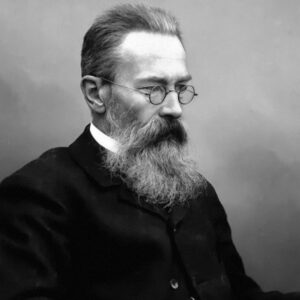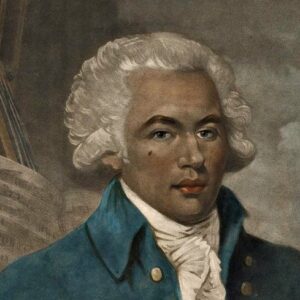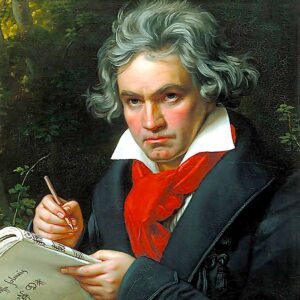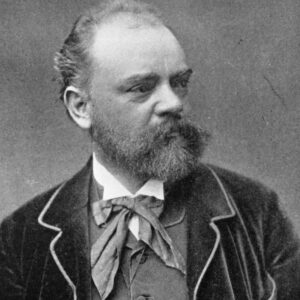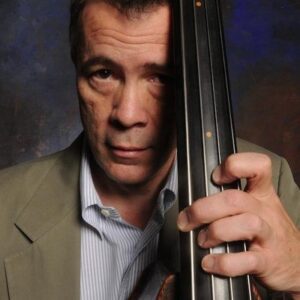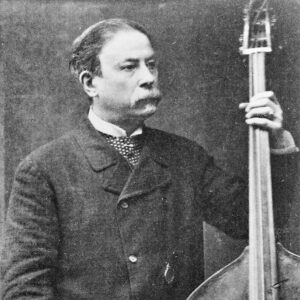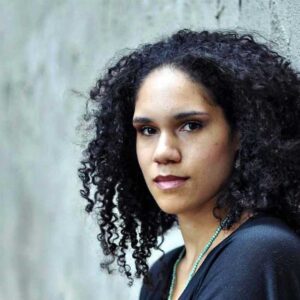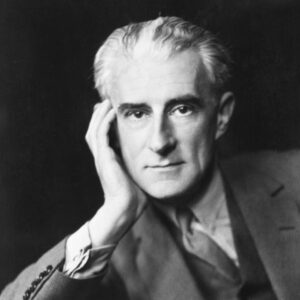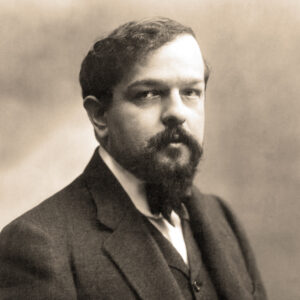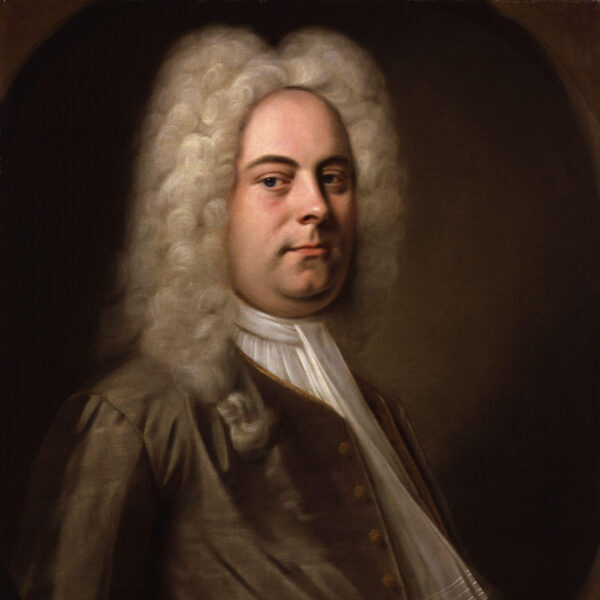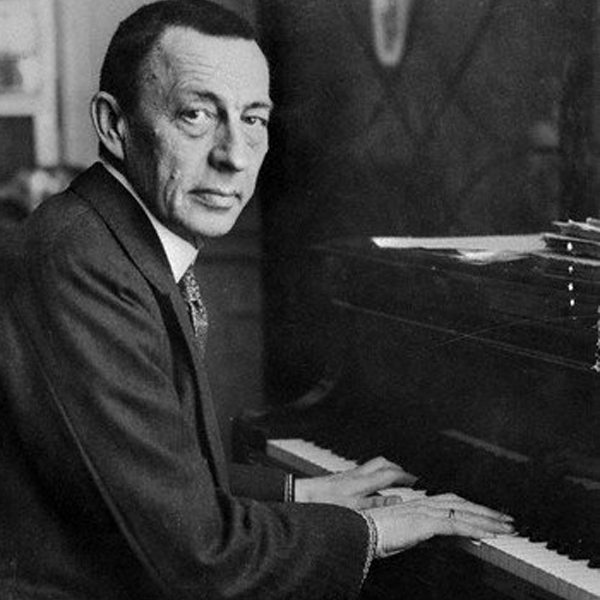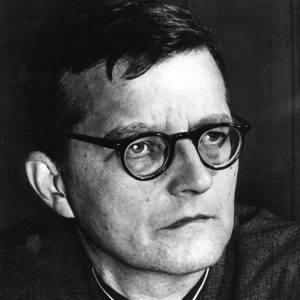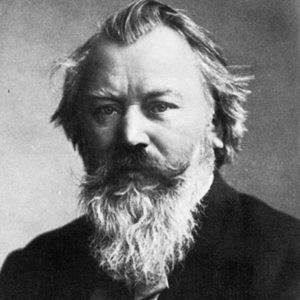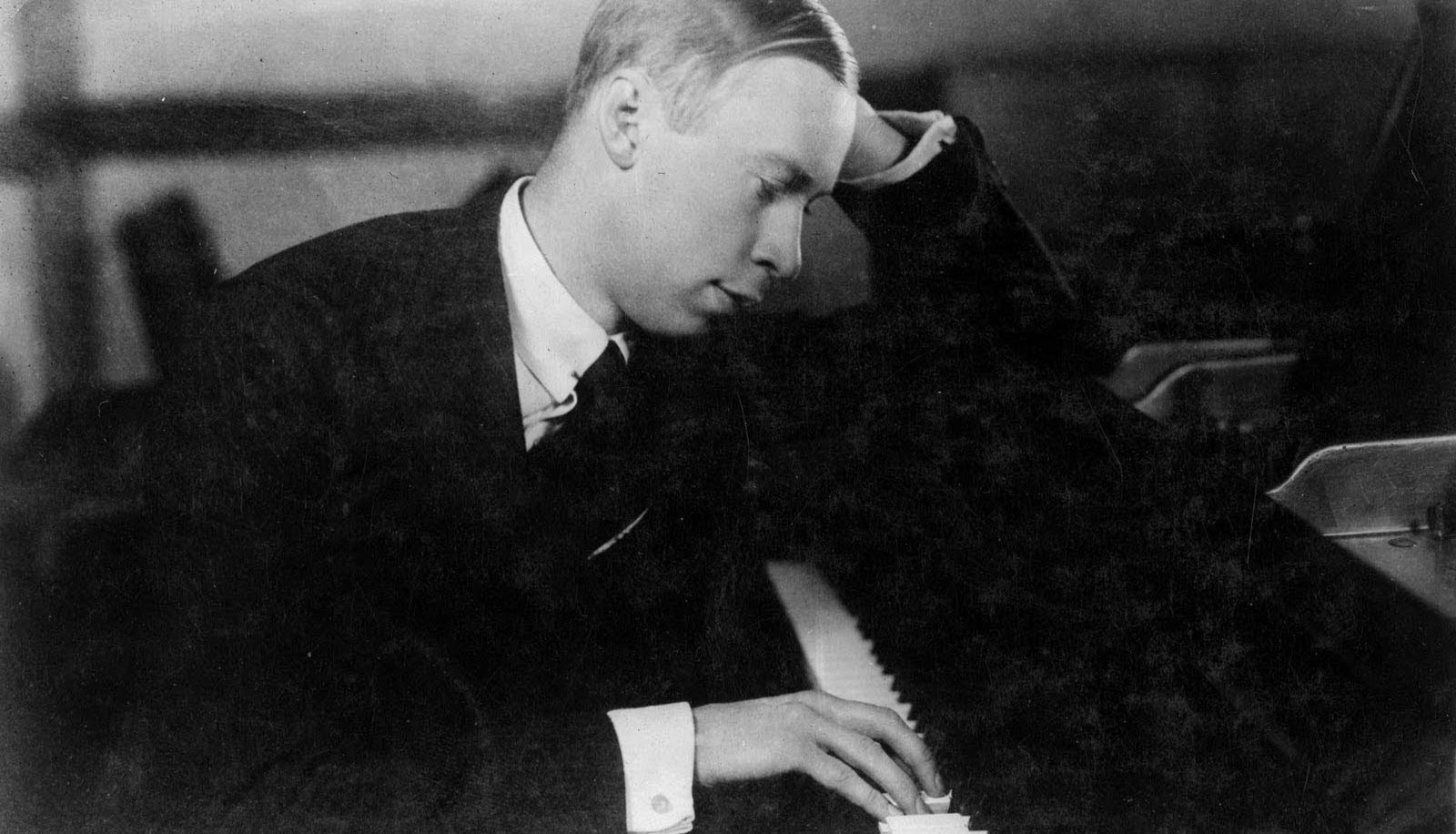
Sergei Prokofiev
Symphony No. 5 in B-flat Major, Op. 100
Sergei Prokofiev, one of the twentieth century’s leading composers was born in Sontsovka (Ukraine) on April 27, 1891, a date that fell near the end of the era of Tsarist rule. It is one of history’s greatest ironies that Prokofiev died on March 5, 1953, the same day as the Communist dictator, Joseph Stalin.
Stalin’s repressive policies had a powerful, and often deleterious effect on the careers of Prokofiev and his colleague, Dmitri Shostakovich. Prokofiev’s Fifth Symphony was composed during the summer of 1944 and received its first performance in Moscow on January 13, 1945, with the Moscow State Philharmonic Orchestra performing under the composer’s direction. The performance was a great success, marking the brilliant launching of the career of one of the twentieth century’s great symphonic masterpieces. The work is scored for piccolo, 2 flutes, 2 oboes, English horn, E-flat clarinet, 2 clarinets, bass clarinet, 2 bassoons, contrabassoon, 4 horns, 3 trumpets, 3 trombones, tuba, piano, harp, a large array of percussion, and strings. The work was last performed by the Winston-Salem Symphony during its 2014/15 season.
Prokofiev’s magnificent Fifth Symphony is undoubtedly the finest of his seven efforts in the genre. The work was characterized by its composer as “the culmination of a long period of my creative life . . . a symphony of the grandeur of the human spirit . . . praising the free and happy man—his strength, his generosity, and the purity of his soul.” These may be pretty words, but they tell us precious little about the music itself or the circumstances under which it was written.
It is useful to review Prokofiev’s efforts as a composer of symphonies up to this point in order to place his Fifth Symphony in better perspective. Prokofiev’s First Symphony (“Classical”), the most familiar to audiences of all his symphonies, was composed in 1916-17 and is an irreverent homage to the style of Haydn. Its enduring popularity, in fact, may be attributed as much to its characteristic wit as to its brilliant technical detail. One rarely hears the Symphony no. 2 (1924-5) nowadays, while his Third and Fourth Symphonies, composed in 1928 and 1929-30, were derived from theatrical works (The Fiery Angel and The Prodigal Son, respectively), and thus cannot be viewed precisely as symphonies.
Prokofiev’s Fifth Symphony, as we have seen, is separated by a full fourteen years from the Fourth, and by an even greater distance—nearly twenty years—from the purely symphonic Second Symphony. The Russian master had spent much of his career removed from his homeland, and his decision in the 1930s to return to what had become the Soviet Union was a fateful one. The Central Committee of the Communist Party had organized the Union of Soviet Composers, and started issuing guidelines for producing examples of “socialist realism.” At first, Prokofiev had little difficulty complying with official Soviet commissions and other related projects (Lieutenant Kije, Cantata for the Twentieth Anniversary of the October Revolution, Alexander Nevsky, and the ballet Romeo and Juliet), but his temperament ultimately proved incompatible with the heavy-handed authoritarianism of Stalin and his cultural henchman Zhdanov. The outbreak of war, Prokofiev’s marital crisis, and increasing friction with his Soviet patrons climaxed in 1941 with the first of a series of heart attacks that would continue to undermine his health. Prokofiev turned his attentions once again to a theatrical project, this time an opera based on Tolstoy’s War and Peace.
In the summer of 1944, Prokofiev was removed to the Ivanovo estate—an institution located some 150 miles from Moscow and operated by the Union of Soviet Composers—and it was here that he worked on his Fifth Symphony. Prokofiev found himself in the company of several of his illustrious colleagues, including his teacher Glière, Shostakovich, Khachaturian, and Kabalevsky, during this period. Perhaps such exalted company inspired Prokofiev, but one cannot discount the possibility that he also was growing ever more confident that the end of the war was in sight, especially now that the Allied Forces had invaded Normandy. Whatever may have been on his mind specifically, the Fifth Symphony was an optimistic work by a master at the height of his powers.
The Fifth Symphony, while in the traditional configuration of four movements, is unusual in that it begins with a noble Andante, rather than a movement in a more customary faster tempo. The slower than usual tempo is no impediment to the formal outlines of sonata form, however. Prokofiev is careful to preserve both the tonal and thematic contrasts that articulate such time-honored convention, infusing the movement with his most colorful writing, especially for the wind and brass sections. The composer’s characteristic tonal “side-slips” also are present in abundance, lending piquancy to his harmonic palette.
The second movement is a scherzo (joke) in all but name. Here is an exhilarating ride through orchestral colors (note especially the percussion and trumpet) and dazzling technical virtuosity for the winds (the clarinet, most particularly). Some of the thematic material in this movement was intended originally for the Romeo and Juliet ballet. The trio section, ushered in by a folksy tune in the oboe and clarinet, is no less exotic. Prokofiev’s rhythmic displacement of the oboe/clarinet tune is of particular interest, as is the atmospheric second theme, stated first in the clarinet and violas. Another enjoyable moment is the tantalizing speeding up that leads to the return of the scherzo.
The Adagio third movement forms the center of gravity of the entire symphony. A haunting ambiguity pervades this movement, brought about by how the harmony toggles back and forth between major and minor modalities. This ambiguity of key is reinforced by a metrical one in which the pulse is sometimes divided by three, sometimes by two, and often by both at the same time. Prokofiev allows one of his most beautiful melodies to soar in the violins, almost literally above the fray. This melody too, as it turns out, had its origins in another project—this time a film score for an unfinished movie based on Pushkin’s Queen of Spades. Much of this Adagio is quite intense, and almost funereal, in tone. Could it be that the normally aloof Prokofiev felt some of the pain associated with the war? A refrain of especial poignancy—one might even characterize it as a lament—recurs throughout the movement, always played by the oboe and bassoon.
The finale begins in almost whimsical fashion, with hints of the main theme from the first movement. The violas usher in a new mood, as the main body of the high-spirited finale gets underway with another virtuosic clarinet theme. From this point on we witness a master of orchestral color at work, unleashing the full complement of a large orchestra. All instruments, including a large section of wind, brass, percussion instruments, are put through their paces.
Program Note by David B. Levy, © 2004/2014



